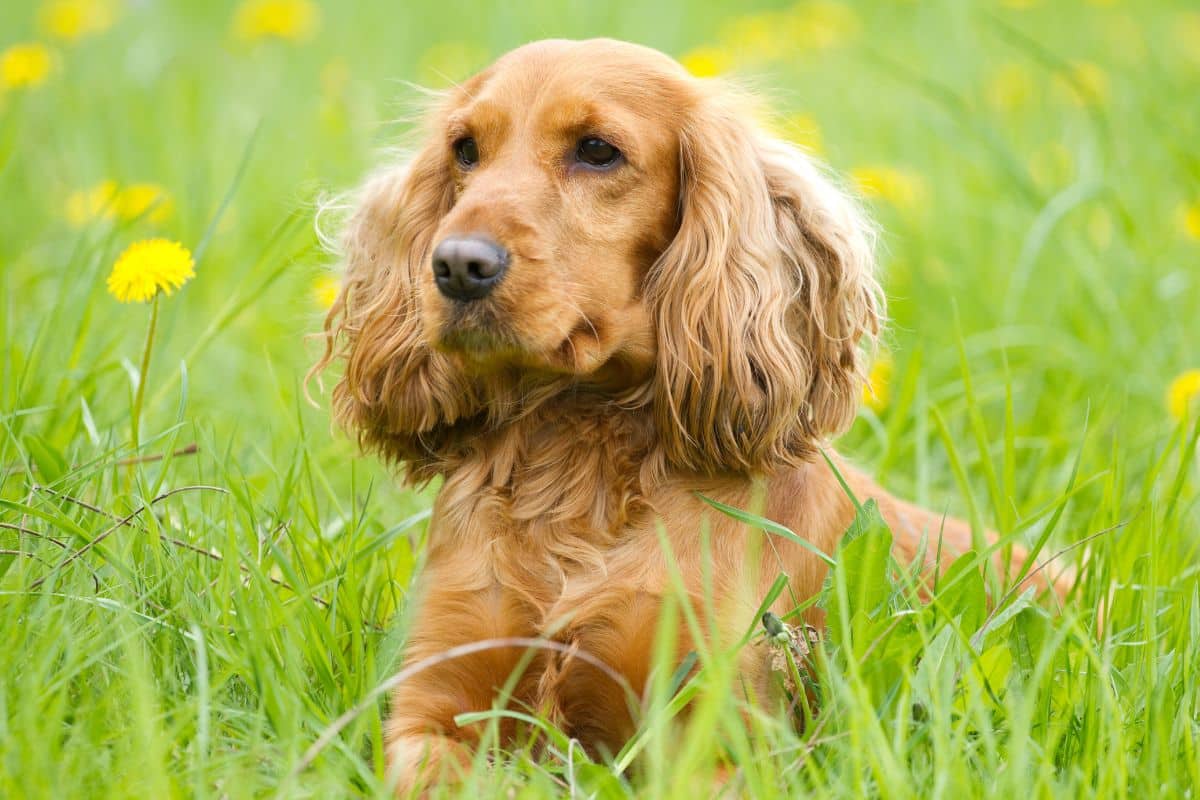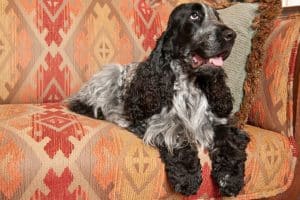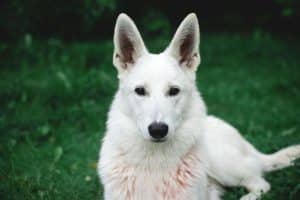Cocker Spaniels are beloved by the world. They have a reputation of being energetic, but also extremely gentle and friendly. These dogs are great whether you like to spend time at home or in the great outdoors. However, did you know that there’s a difference between working Cocker Spaniels and show ones?
If you have been considering buying yourself one of these amazing animals, you’re in the right place! Before looking any further, you should know the differences between the show and working versions of this dog, because there are a lot!
Technically speaking, these two dogs are the same breed. However, they do have different needs, personalities, and appearances. One might suit your lifestyle perfectly, while the other doesn’t.
If you want to learn which one is more fitting for you, keep reading. We’re going to go through everything you need to know right here.
The Difference Between Show Cocker Spaniels And Working Cocker Spaniels
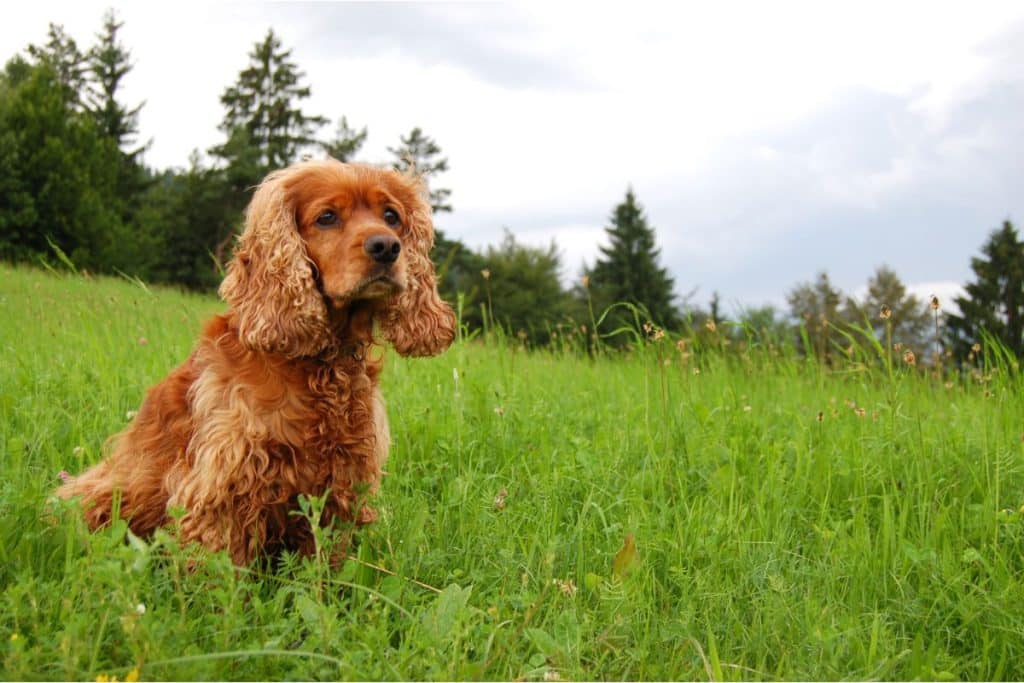
The History Of The Cocker Spaniel
If you went to find information about show vs working Cocker Spaniels, even the Kennel Club would say they are the same breed. However, if you did any research into buying a Cocker Spaniel puppy, you would immediately recognise something: breeders sell the two different types.
This breed started out as a working breed, like many other breeds around the world. Over time, breed standards have become observed and regulated more strictly.
Show dog championships have also become immensely popular, which has led a lot of breeders to focus on the way a dog looks rather than its functionality. This is the same for Cocker Spaniels.
Because of the rising popularity of show dogs, more show dogs were bred! This doesn’t mean that the working Cocker Spaniel disappeared, though. Instead, the two types were separated to continue lines of pure “working” Spaniels, and “show” Spaniels.
The Cocker Spaniel’s Working History
Cocker Spaniels can be dated back to the 14th century, but only in the 1800s did they become a recognised breed. In 1893, the Kennel Club set up a dedicated Cocker stud book.
When they were first bred, these dogs played a key role as working dogs in helping hunters. They worked as flushing dogs, so they were professionals at finding birds hiding away in the underbrush.
Once the birds were located, the dog would “flush” them out by scaring them into flight. This allowed the hunter to get a good shot and down the bird.
As time passed, this breed was also trained in finding and retrieving the shot birds. This resulted in them being bred to have muscular and strong necks, as they had to be able to carry larger prey to deliver it to their handlers.
This breed’s name comes from the fact that they were frequently used to flush woodcocks. These popular game birds eventually aided in giving the breed the Cocker name.
Their Show Dog Origin
In the 1900s, the English Cocker Spaniel started its career as a show dog. Breeders began to create “strains” of Cockers following the identification of breed standards.
The dogs were bred so that they were considered to be the “ideal” of the breed, which focused on the appearance. As such, the appearance of the show Cocker Spaniel began to change over time.
While working Cocker Spaniel breeders continued to put emphasis on things like physical strength, intelligence, and stamina, things changed for show breeders.
Since these dogs were not bred for working, breeders that were producing “show” Spaniels did not need to focus on any of the above traits. This led to surprising differences.
Overall, the primary difference between show and working Cocker Spaniels is their breeding. The latter has been specifically bred to be strong and efficient workers. Show Spaniels, on the other hand, have been bred for aesthetic purposes and their general temperament.
A Look At Working And Show Spaniels Today
Today, we can trace modern working and show Cocker Spaniels to either of those “strains”. Despite there being no official regulations regarding working and show Spaniels, professional breeders always avoid mixing the two strains.
This is because both variations are incredibly good at what they were bred for! If you know anything about Crufts, you might know that show Cocker Spaniels have won “Best in Show” an incredible seven times. That’s three more wins for Crufts than any other dog breed, and certainly nothing to scoff at.
Bird hunting isn’t as big as it once was. However, even though the glory days are over, working Cocker Spaniels still work hard. This breed is often used in the police and military as sniffer dogs. That means that they are trained to detect a wide range of illegal items such as bombs, firearms, and even cash!
Not only that, but they are also put to work as search and rescue dogs, and are excellent assistance dogs for the disabled. Overall, they are incredibly helpful breeds and work hard to keep the public safe.
Working Vs Show Cocker Spaniels – The Differences
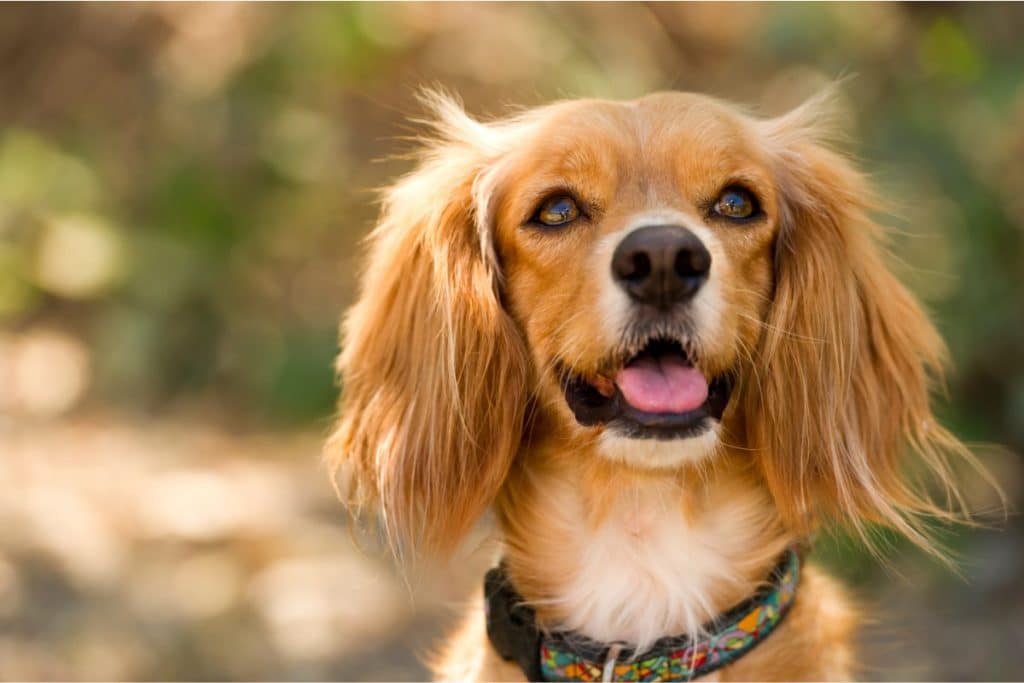
Now that you have all the basic information about this breed’s history, let’s look at the differences you would notice between them. This is incredibly important if you’re trying to decide which one to get, because they require different things from you!
A Note On Appearance
All Cocker Spaniels will look the same until they are around 10 weeks old. Physical differences between the strains will only start to show when they are 12 weeks or older. Generally, working dogs will have shorter ears and be physically stronger than the show dogs.
Let’s take a look at the key differences in appearance to consider when comparing working and show Cocker Spaniels in the sections below.
Work Cocker Spaniel
The work strain of Cocker Spaniels have no specific standards to meet. However, these dogs are typically the same size as show breeds, but tend to have longer bodies. Angulation isn’t the focus, but efficiency. They are strong and muscular, as they need to be good at what they do.
The skulls of these work dogs are flatter than show Spaniels, and they have muzzles that are longer and more narrow. They have ears that are set above their eyes and significantly smaller than the show strain. This is because long ears would be incredibly impractical for the animal’s work.
The coats of working Spaniels are shorter and finer than show dogs’. Feathering is less noticeable, and colouring is not important. This has resulted in working Spaniels that are a range of colours.
The tails of working dogs used to be docked historically. However, docking is now a controversial topic and is generally frowned upon, even for working dogs.
This practice was originally done in order to prevent the animal’s long tail from getting in the way and causing injury while working. Now, however, docking is rarely done, even if the dog is a working breed.
Working Cocker Spaniels require a lot more exercise than show dogs. They have a lot of stamina, and don’t tire easily. When they do not get the exercise they need, it’s common for them to become frustrated.
This can cause them to misbehave or even become aggressive. To combat this, a number of working Spaniel owners like to take part in agility classes, gundog, and scent-work as a means to give their dogs the action they need.
Show Cocker Spaniel
The show strain will have a compact but balanced body with a large ribcage and short loins. Despite them being show dogs, they are still bred from strength and their muscles. They are registered as being a working breed, and breeders have made sure to reflect the Kennel Club’s breed standards, even for show breeds.
The heads of show Cockers are very distinct. They have rounded skulls with relatively short and square muzzles. The Kennel Club states that their ears must be long and level with their eyes.
Their fur also has to meet standards. Coats are typically much longer, and they are only allowed to have a small amount of white on the chest to qualify. The show dogs can also only have specific colours in their coat, which is not an issue with working dogs.
Show Cocker Spaniels didn’t have docked tails. As they weren’t bred for working, there was no cause for docking their tail. Not only that, but the tail of a dog is often considered to be an aesthetic feature, which show dogs are required to have.
This strain only requires around one hour of physical activity every day. They are easy to care for in that way, and are less likely to become frustrated and misbehave. However, they are still considered working dogs, and do require activity to keep them happy and healthy.
Health
Whether they are a work or show Cocker Spaniel, they are susceptible to all of the same health conditions. They are typically easy to keep in good health, but they are at risk of ear and eye conditions. Breed-specific health conditions include things like pancreatitis, heart disease, and slipped discs.
Despite having the same health conditions, work and show Cockers could need different diets. Generally, show dogs are more likely to become overweight. Working dogs might need more protein if they do a lot of exercise and work daily.
The best thing to do is talk to a vet to see what kind of diet would be best for your Cocker Spaniel. Depending on their daily lives and activity levels, diets might have to be switched and tested before you find one that is perfect for your specific dog.
Personality
Working Cocker Spaniels and show Cocker Spaniels are still the same breed. As such, you can expect roughly the same in terms of personality: energetic, lively, and friendly.
It is worth mentioning again the importance of exercise when it comes to the working strain of this breed. You will need more than an hour of exercise, and tiring out these working dogs is not easy.
It’s crucial that you are able to give the dog you choose everything it needs in order to be happy. If you are unable to attend something like gundog activities, and don’t have the space for your dog to run around when they like, they might not be for you.
Show Cockers are less demanding in this respect, and are much easier to tire out. As such, an hour of exercise is okay for them, and you won’t have to worry about a frustrated dog.
Trainability
Training can vary for working and show Cocker Spaniels. The breed as a whole are known to be very intelligent dogs, and they are typically easy to train. Training is often well-received by them as it also keeps them busy and keeps their mind engaged.
With that being said, it’s worth mentioning that this breed is strong-willed. If you don’t have the willpower to match their stubbornness, you might have a hard time training them. Systematic training is a necessity if you want to get anywhere. To start, puppy obedience classes would be incredibly beneficial.
You could expect working Cocker Spaniels to put more effort into their training and any work they do. This means that they will probably learn faster, too. Their breeding ensures that they are hard workers and love to please their owners. Show dogs might be slightly more challenging on that front!
Which Dog Is Best?
If you’re trying to choose between a working and show Cocker, your lifestyle will play a huge factor. If your intent is to enter the dog into breed competitions, the show Cocker is an easy winner. However, if you want to enter into agility competitions and challenges, the working Cocker Spaniel is perfect.
Show Cockers are perfect for you if you’re looking for a dog that will enjoy snuggling with you. They are low maintenance and much easier to care for than the working type.
If you’re someone who leads an active lifestyle and frequently goes on walks, hikes, bike rides, or anything else, the working type might be a good fit! They are great companions and love being active.
It’s crucial for you to be able to give your dog everything it needs. Take a close look at your lifestyle before making any choices. It could be the difference between a happy dog and a frustrated one.
Final Thoughts
Show and working Cocker Spaniels are two lines, but part of the same breed. As their names suggest, the show types are great for breed competitions and less active lifestyles while the working is a great work dog.
Now that you know the differences between these dogs, hopefully you can make the right decision in picking the one that’s right for you!
